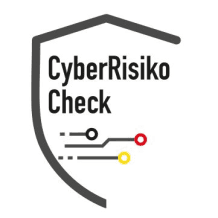What is Data Anonymization?
Data Anonymization is a process aimed at transforming personal data in such a way that the privacy of the individuals concerned is protected while maintaining the utility of the data. This process makes it difficult or impossible to associate a position or attribute value with a specific person. Data anonymization techniques aim to reduce the identifiability of individual records.
Typical Techniques of Data Anonymization:
❌ Pseudonymization: Replacing identifying features with artificial identifiers.
❌ Masking: Concealing certain data within a dataset, e.g., by omitting parts of information.
❌ Generalization: Generalizing details of a dataset to reduce identifiability, e.g., by showing an age range instead of a specific age.
❌ Noise Addition: Introducing additional data or errors to make the original data unrecognizable while maintaining overall patterns.
Challenges of Data Anonymization:
While anonymization solutions are offered, there are various challenges:
✔ Reidentification Risks: Even anonymized data carries the risk of reidentification, especially when combined with other datasets.
✔ Data Integrity: Ensuring the utility of data after anonymization without distorting analysis data.
✔ Regulatory Requirements: Compliance with legal regulations for data anonymization, such as the GDPR.
Protective Measures in the Use of Data Anonymization:
✔ Regular Evaluation and Improvement: Continuous review and enhancement of anonymization techniques to ensure data integrity and privacy preservation.
✔ Training and Awareness: Employee training to create awareness of data protection and anonymization.
✔ Data Management Policies: Implementation of clear policies for handling sensitive data.
Why is Data Anonymization Important?
Data Anonymization is an essential part of the data protection toolkit for companies that work with and analyze sensitive information. It is important for:
✔ Data Protection: Protecting the privacy of individuals concerned and minimizing the risk of unauthorized use of information.
✔ Compliance: Meeting legal and regulatory requirements to avoid legal consequences.
✔ Ensuring Data Availability: Enables the use of anonymized data for analytical purposes without compromising privacy.
Conclusion
Data Anonymization is a critical element in data management that enables the protection of privacy while still allowing the use of data for valuable analysis. The integration of strong and up-to-date anonymization methods can not only help organizations meet legal requirements but also optimize their capacity for data analysis. It is recommended to regularly review and adapt technologies and methods of data anonymization to ensure data protection and meet new challenges.
📌 Related Terms: Data Protection, Data Security, GDPR
Data Anonymization in Germany: Current Developments
The importance of data anonymization in Germany is continuously growing. According to recent studies by the Federal Office for Information Security (BSI), German companies are increasingly affected by cyber threats. The Bitkom Association reports that 84% of German companies have fallen victim to cyberattacks in the last two years.
Particularly in the field of data anonymization, the following trends are evident:
Increasing investments in preventive security measures
Heightened awareness of holistic security concepts
Integration of data anonymization into existing compliance frameworks
EU Compliance and Data Anonymization
With the introduction of the NIS2 Directive and tightened GDPR requirements, German companies must adapt their security strategies. Data Anonymization plays a central role in meeting regulatory requirements.
Important compliance aspects include:
Documentation of security measures
Regular review and update
Proof of effectiveness to supervisory authorities
Practical Implementation in Corporate Daily Life
The integration of data anonymization into everyday corporate life requires a structured approach. Experience shows that companies benefit from a phased implementation that considers both technical and organizational aspects.
Think of data anonymization like insurance for your company: The better you are prepared, the lower the risk of damage from security incidents.
Further Security Measures
For a comprehensive security strategy, you should combine data anonymization with other security measures:
Vulnerability Management - Systematic vulnerability management
Penetration Testing - Comprehensive security tests
Security Hardening - Employee awareness
Incident Response Plan - Preparedness for security incidents
Conclusion and Next Steps
Data Anonymization is an essential building block of modern cybersecurity. Investing in professional data anonymization measures pays off in the long run through increased security and compliance conformity.
Do you want to optimize your security strategy? Our experts are happy to assist you in implementing data anonymization and other security measures. Contact us for a non-binding initial consultation.
🔒 Act now: Have our experts assess your current security situation
📞 Request Consultation: Schedule a free initial consultation on data anonymization
📋 Compliance Check: Review your current compliance situation
📌 Related Topics: Cybersecurity, IT Security, Compliance Management, Risk Assessment
Best Practices for Data Anonymization
The successful implementation of data anonymization requires a systematic approach. Based on our many years of experience in cybersecurity consulting, the following best practices have proven effective:
Strategic Planning
A thoughtful strategy is the foundation for successful data anonymization. You should consider the following aspects:
Define clear objectives and success metrics
Involve stakeholders early and define responsibilities
Calculate realistic timelines and budgets
Conduct risk assessments and contingency planning
Technical Implementation
The technical implementation of data anonymization should proceed step by step:
Analysis of the Current Situation: Assess existing security measures
Gap Analysis: Identify areas for improvement
Pilot Project: Trial run in a limited area
Rollout: Gradual expansion to the entire company
Monitoring: Continuous monitoring and optimization
Common Challenges and Solutions
When implementing data anonymization, similar challenges regularly arise. Here are proven solutions:
Resistance to Change
Employees are often skeptical of new security measures. Successful change management strategies include:
Transparent communication about benefits and necessity
Training and education measures
Involvement of opinion leaders as multipliers
Gradual introduction with quick wins
Budget Constraints
Limited resources require a prioritized approach:
ROI calculation for various measures
Phased implementation based on priorities
Utilization of synergies with existing systems
Consideration of compliance requirements
Measuring Success and KPIs
The success of data anonymization measures should be measurable. Relevant metrics include:
Quantitative Metrics
Number of identified and resolved vulnerabilities
Reduction of average response time to security incidents
Improvement of compliance ratings
ROI of implemented security measures
Qualitative Assessments
Employee satisfaction and acceptance
Feedback from clients and partners
Evaluation by external auditors
Reputation and trust in the market
Future Trends and Developments
The landscape of cybersecurity is continuously evolving. Current trends that influence data anonymization include:
Artificial Intelligence: AI-supported threat detection and defense
Zero Trust Architecture: Trust is not assumed but continuously verified
Cloud Security: Adaptation to hybrid and multi-cloud environments
IoT Security: Protection of connected devices and systems
Quantum Computing: Preparation for post-quantum cryptographic procedures
Companies that invest in data anonymization today position themselves optimally for future challenges and opportunities.
Your Next Step
The implementation of data anonymization is an investment in the future of your company. Our experts help you develop a tailored solution that meets your specific requirements.
Start today:
📞 Free Consultation: Schedule a non-binding conversation
📋 Security Assessment: Have your current security situation evaluated
🎯 Customized Solution: Development of a tailored data anonymization strategy
🚀 Implementation: Professional execution with continuous support
Contact us today and take the first step towards a safer digital future.




